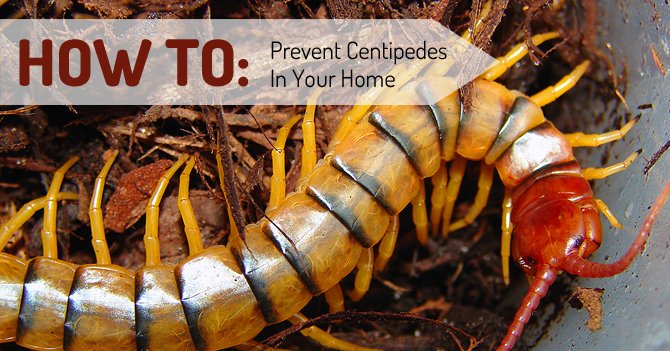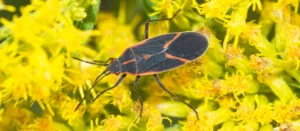$50 OFF New Residential Customers. Learn more
How to Prevent Centipedes

Now that we’ve discussed the centipedes that are most common in Arizona, it’s time to learn about the most effective ways to prevent centipede infestation. While it’s true that centipedes can help control other pest populations (they like to dine on crickets, cockroaches, silverfish and other insects), it’s not a very comforting thought to replace one pest with another. Their many-legged appearance and speed of movement can make them unsettling visitors, and the threat of their venomous “bite” makes most people want to keep them out of their homes. If you need pest control at your home or business in Arizona, we can help. We have offices in Gilbert and Phoenix that make it easy for us to serve the entire metro area including Glendale, Tempe, Peoria, and more.
About Centipedes
Before we go into how to centipede-proof your home, it’s important that we talk about centipede bites. While all centipedes are venomous, they generally do not bite unless they are provoked. Their “bites” are actually stings from a pair of hollow, adapted leg structures on the first segment of their bodies. These hollow gnathosomes or gnathopods are filled with venom and can impart a painful sting, similar to a bee sting. The stings are typically not dangerous, but they can be quite painful – in general, the larger the centipede is, the more painful its sting will be. Additionally, centipede legs are tipped by tiny claws that can leave venomous residue and small puncture wounds if they walk on human skin. These wounds are not dangerous but can irritate the skin.
For this reason, we do not recommend that you handle a centipede if you see it indoors or near your home, especially if it is a large common desert centipede or giant desert centipede. If you wish to remove a centipede from your home, handle it as you would a snake – sweep it into a trash can or bucket, and deposit it outdoors. In the case of smaller house centipedes, you can scoop it into a jar and take it outside, or, if you’re like most people, you may prefer to stomp it on sight.
While centipedes don’t present a major threat to your health or your property, and they don’t tend to heavily infest their habitats, you still want to take steps to prevent them from entering your home, since they are so common in Arizona. There are many tactics you can use to keep centipedes from invading your house, both indoors and outdoors.
Outside the Home
- Centipedes prefer damp habitats, so make sure that your landscaping drains away from your property. Check your property for areas where broken sprinkler heads or gutters are causing your landscaping to become too wet.
- Centipedes are nocturnal, and stay hidden in dark, damp places during the day. Clear your yard of piles of lawn debris and leaves, and keep wood piles away from the foundation of your home.
- Check your foundation for cracks that might provide easy entry for the centipede, and fill them with caulk or mortar.
- If necessary, call us to discuss effective pesticide barrier treatments that can be safely used around common entry points of your home.
Inside the Home
- Centipedes, and especially house centipedes, prefer damp environments in your home, as well. Fix any leaky faucets or pipes, and ensure that water is not seeping into your home’s foundation. You may even want to invest in a dehumidifier if an area is especially damp.
- Use sticky traps in areas where you frequently see centipedes, such as closets, basements and other areas where they like to hunt. Not only will this help you determine the number of centipedes in your home, it can also help you find out where their entry points are.
- Since centipedes feed on other insects, it is crucial that you remove their food sources. Treat your home for cockroaches, silverfish and crickets.
- Keep piles of clothing or bedding off the floor, and keep your home neat and tidy to cut down on the dark places where centipedes like to hide.
- The flat body of a centipede can fit through even the tiniest opening. Visually inspect door and window frames for cracks and entry points, and use caulk to fill them.
For most situations, these tips will keep centipedes from having the run of your home. If you do notice a large amount of centipedes in your home and these methods are not effective enough, give us a call so we can discuss your options for treatment. In some cases, the problem might be solved if we treat your property for other insect infestations.
Photo courtesy of Matt Reinbold
Related Posts

Killer Bees in Arizona? Understanding Africanized Bees and How to Coexist Safely
You’ve likely heard the term “killer bees” used to describe Africanized bees in Arizona, but did you know this nickname…

Red & Black Intruders: Meet Arizona’s Boxelder Bugs
Boxelder Bugs in Arizona If you’ve ever stepped outside and spotted a cluster of black-and-red bugs crawling on your porch…

Jumping Spiders in Arizona: Harmless or Hazardous?
Jumping spiders in Arizona might be small, but they can sure give you a big surprise when they suddenly appear…